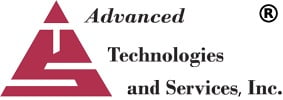In February, WISPA urged the FCC to update its Universal Service Fund (USF) programs to better accommodate small broadband-only providers who deliver needed internet access to millions of Americans in high-cost areas and in the digital divide.
Each quarter hundreds of small communications providers in America overpay their USF Fees. A volatile contribution factor, along with a high Safe Harbor rate are to blame.
The Safe Harbor rate is an assumed percentage that allows VoIP carriers to assume that 64.9% of their call traffic was interstate or international in nature. It was created by the FCC to simplify the 499A reporting process, and many providers still opt to use the Safe Harbor percentage to streamline the filing process. However, the 64.9% was not created with smaller VoIP carriers in mind, who most often don’t have a Percent of Interstate Usage (PIU) near 64.9%.
Many local providers in the US are small enough to be considered De Minimis, meaning they have a total annual USF contribution of less than $10,000, and thus do not have to contribute to the USF. Many will eventually need to contribute to the USF as their customer base grows, but there are ways that they can stay De Minimis for a longer time.
Rather than using Safe Harbor, smaller carriers can perform a Traffic Study to determine their actual PIU, which is likely to keep their annual contribution under $10,000 for longer.
To put this into perspective, let’s do some easy math.
For the first example, let’s pretend that there’s a smaller VoIP Provider that has bundled local and long distance to accumulate an annual revenue of $100,000. We’ll use 2022’s First Quarter contribution factor of 25.2%, and say that this carrier used the Safe Harbor Rate of 64.9% with their filing. Their USF contribution formula would be;
- Yearly Revenue $100,000
- PIU (Safe Harbor) 64.9%
- Contribution Factor 25.2%
(($100,000 x .649) x .252) = $16,355 USF Contribution
By using safe harbor, their total annual contribution to the USF is well over the $10,000 de minimis threshold at $16,355. In our experience of performing Traffic Studies, we’ve found that many wireless carriers’ international or interstate calls are around half of Safe Harbor and hover around 30%, more or less.
Let’s try that scenario again, except this time when the VoIP Provider files their 499A, they opt to perform a Traffic Study that determines that their actual Percent of Interstate Usage is 30%.
- Yearly Revenue $100,000
- PIU (Safe Harbor) 30%
- Contribution Factor 25.2%
(($100,000 x .30) x .252) = $7,560 USF Contribution
As you can see, by using a Traffic Study to determine that their interstate revenues were only 30%, they were able to be well below the De Minimis threshold and become (or stay) De Minimis, thus saving $16,355 annually on USF Fees. The calculations above were done using the VoIP Safe Harbor rate of 64.9%, although Wireless Carriers would still see similar numbers when performing a study.
Even if you don’t think that you’ll be De Minimis, it’s in every providers best interest to perform a traffic study to know how much of their revenue is international or interstate in nature.
To learn more about completing USF Traffic Studies, read our White Paper or contact us to get an estimate.
